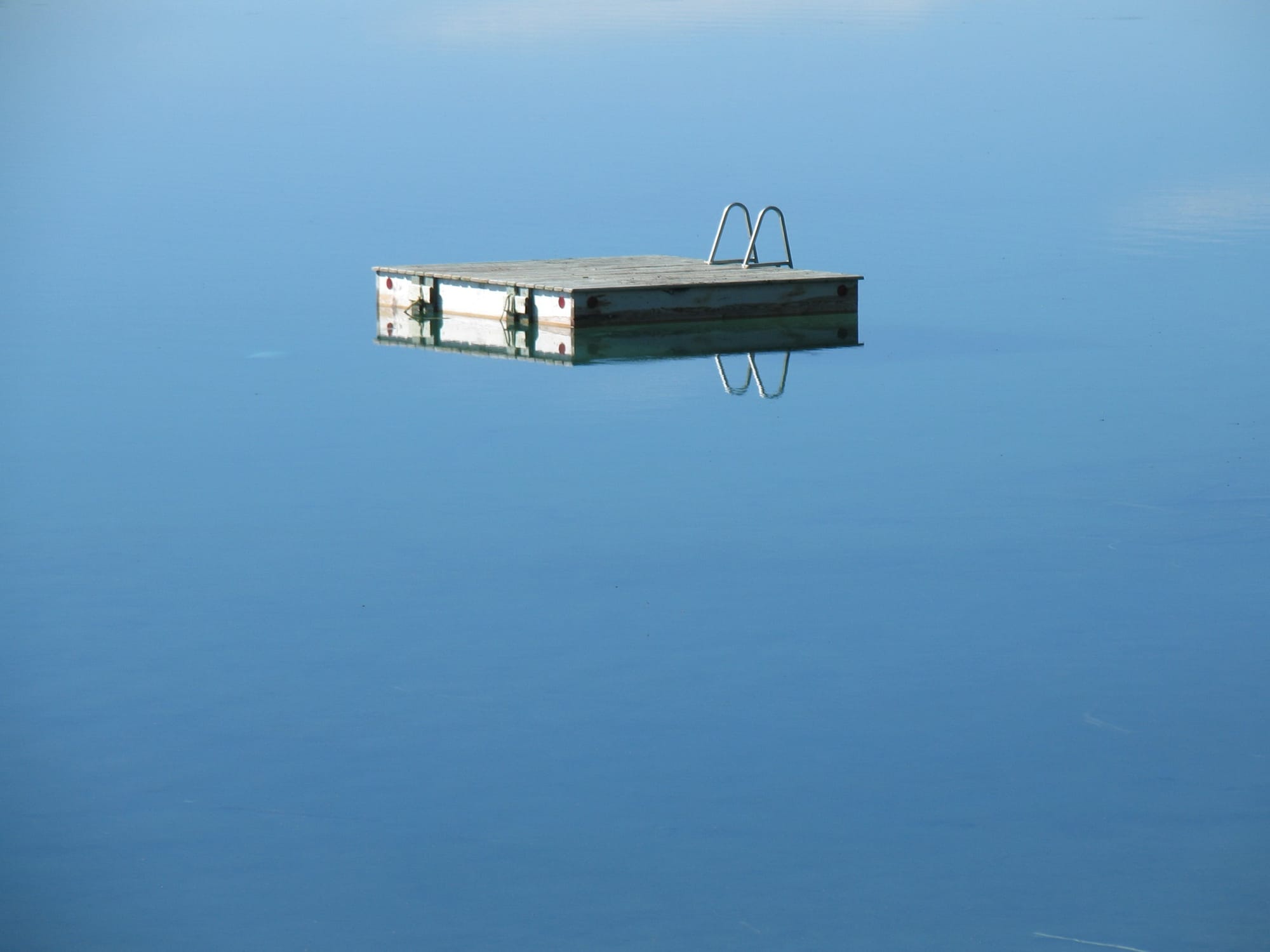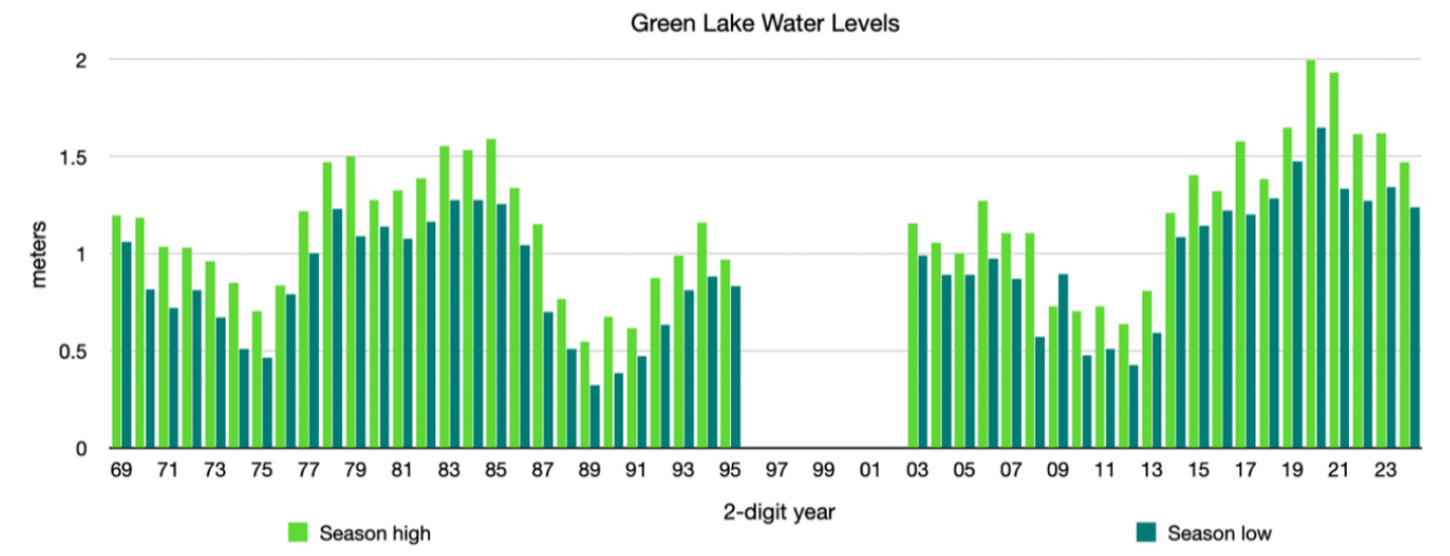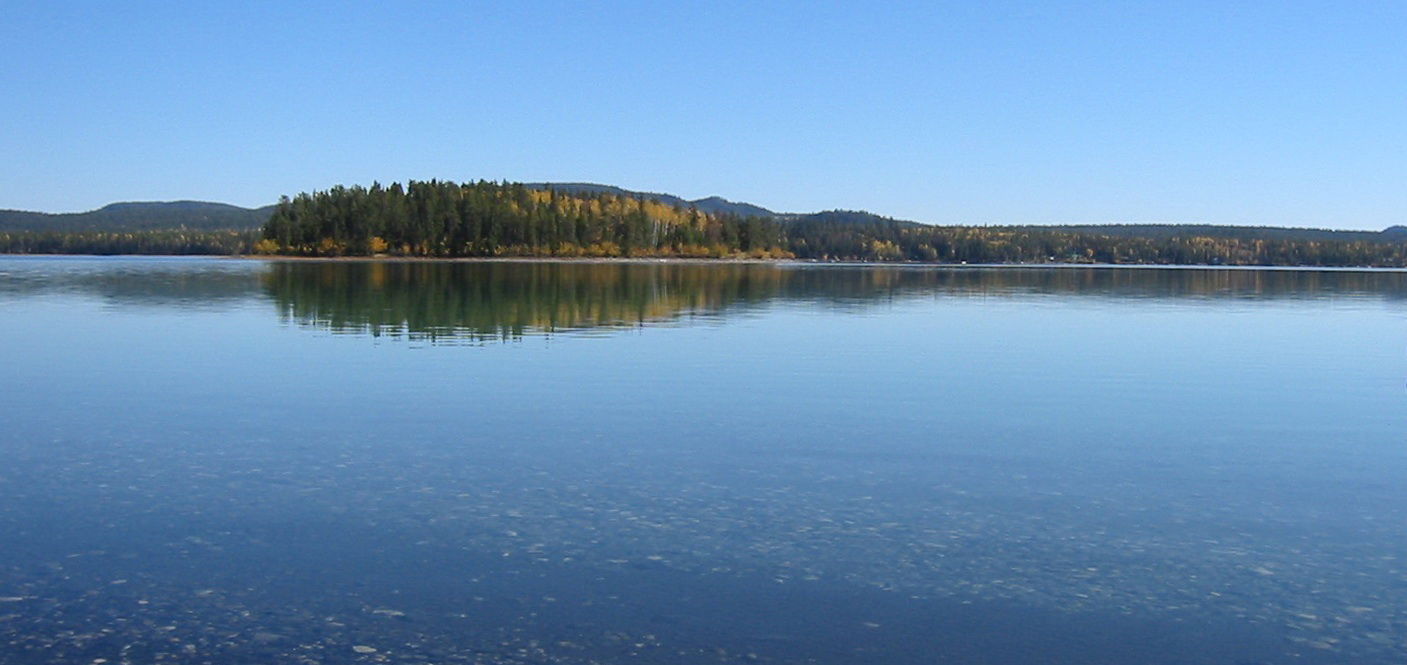Water depth records

From 1993 until his passing in 2023, Gord Labinsky kept records of the annual change in lake levels. His daughter, Sandy, has agreed to publish these records and to maintain the annual recording. If anyone has records for the missing years, we would be gladly complete the records.
Green Lake water levels are in constant flux, with multi-year cycles of higher and lower water elevations. There is reliable measurement data going back to 1969, however there are also anecdotal stories of lake levels being both much higher, and also much lower than the recorded measurements over the past 55 years. There are likely plenty of folks with lakeside or roadside properties who have hit beach sand and gravel while digging in their yard, or those distinctive white carbonate-coated rocks, far from the current shoreline. Between the years of 1969 and 1995, Environment Canada monitored and recorded Green Lake water levels. Several years after the monitoring and data stopped, my father, Gordon Labinsky, was able to get a copy of their measurement records and he was able to take a look at the decommissioned but still present water elevation gauge. He wanted to continue monitoring the water level and changes, so he set up his own measurement system using a long steel rod pounded into the lakebed and he would measure the water height above the head of that rod using a long stake with an old tape measure attached. Accurate measurement using this system relies on having flat calm conditions, so measurements are taken at varying intervals, usually around 2 weeks. After my father’s death in 2023, our family wanted to continue his lake-level monitoring efforts so we have been taking measurements starting in late Spring and ending in October, well before freeze-up. The measurement records show that annual high-water most often occurs in June or July, but has been as early as April (1987, 1989, 2010) and as late as August (1976, 2003). Low water for the year happens prior to freeze, and occurs in October or November. Our family measurements have normally ended by late October, so it is possible that the lake had a lower low-water elevation for some of the years we have kept data. We also have a gap in the records between 1996 and 2002, which are the years after Environment Canada’s data ends and before my father began recording his own. We have plenty of family pictures taken at lakeside during those years to see how much beach area we had during that time, and those years were not outside the normal fluctuations observed in the known data. The lowest water level recorded during this 55-year interval was in 1989, and the highest was relatively recent in 2020. The elevation difference between this high and low is 167 cm/65 ¾ inches. The summer of 2021 had the most significant single-year drop of 59.6 cm/23.5 inches. Green Lake has very minimal flushing action, with water coming from just a few small creeks and leaving by only one outlet towards Little Green Lake at the east end of the lake. The natural underwater berm which controls the outflow of water has an elevation of about 96 cm/37 ¾ inches above the 1989 low-water level, so years with lake elevation lower than that level indicates that Green Lake is in a dead-pool status with no flushing action whatsoever. This is why it is crucial for all residents and property owners in the Green Lake watershed to be mindful of contaminants, such as boat fuel, fertilizers, and detergents, which can end up in the lake. Currently, as of the writing of this article in August 2024, Green Lake is about 4 cm above reaching that dead-pool elevation. During the 26 years that Environment Canada measured the lake, there was only flushing action for 8 of those years. Stewardship of our jewel of a lake is a shared responsibility. Learning more about the ecology of Green Lake and how to mitigate the build-up of contaminants will ensure that we can continue to enjoy it and hand it down to our future generations.
written by: Sandra Labinsky May 1, 2025 update: At ice off this year, April 11th the lake level was up 3 inches from “ice on” back in December 10th, 2024. This is only about 1 inch higher than it was at “ice off” April 15th, 2024. If this proves to be an average/normal year, we won’t know the 2025 high water measurement for a couple of months yet.

